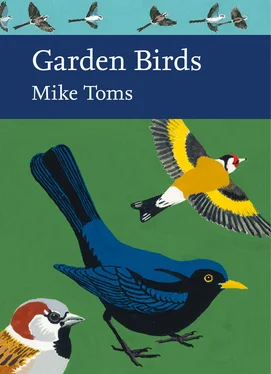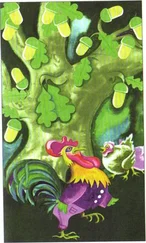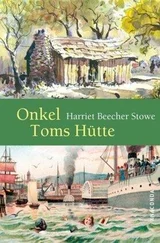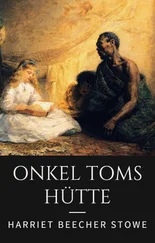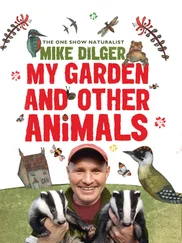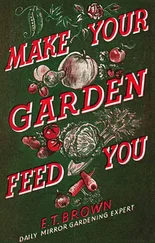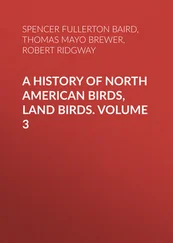Nectar feeding is thought to be a widespread behaviour in UK Blue Tits, with the species recorded feeding from a variety of flowers across 33 counties within the UK (Fitzpatrick, 1994). There has also been a small amount of more detailed work, examining the contribution that nectar taken from Flowering Currant Ribes sanguineum makes to Blue Tit spring diet (Fitzpatrick, 1994). This revealed that although the nectar was not the preferred food – it was used most when peanuts were unavailable because of competition from other birds – it was a highly profitable food source, contributing up to 50 per cent of the average daily metabolic rates of the Blue Tits studied. The use of nectar sources by suburban populations of predominantly nectar-feeding birds has been examined in Australia, with a view to understanding the contribution that native and exotic shrubs make towards the available nectar resource (French et al., 2005).
FOOD SELECTION BY GARDEN BIRDS
The contribution that food provisioned at garden feeding stations makes to the energetic and nutritional requirements of garden birds varies between seasons and between species. It also varies between the different types of food provided, with some higher in fat or protein content than others, and with differences in the amount of time required to ‘handle’ and process the food. It is difficult to study the feeding preferences of birds out in the field, particularly in a garden setting where individual birds can find alternative feeding opportunities nearby. A small amount of work has been done here in the UK with, for example, Greenwood & Clarke (1991) examining the selection of black-striped sunflower seeds and peanuts – peanuts were the preferred food taken.
One of the biggest studies to have been carried out was that undertaken by Geis (1980) in the United States. The study, carried out between November 1977 and July 1979, made use of a network of volunteers, observing and recording feeding preferences at specially designed feeding stations, capturing details of 179,000 feeding visits. Geis adopted a standard approach, whereby the food types being tested were compared against two ‘standard’ foods commonly provided by householders: black-striped sunflower seed and white proso millet. The results of the work underlined a general pattern of preferences across the bird species visiting and also highlighted the individual preferences of particular species. American Goldfinch, for example, favoured hulled sunflower seeds over Niger, with Niger favoured over oil-type sunflower seeds, black-striped sunflower seeds and white proso millet. In contrast, House Sparrows favoured white proso millet but would feed on almost anything, with the exception of flax and rape seed. Selection of Niger by fine-billed finches is something that has been documented in other studies (Horn et al., 2014).
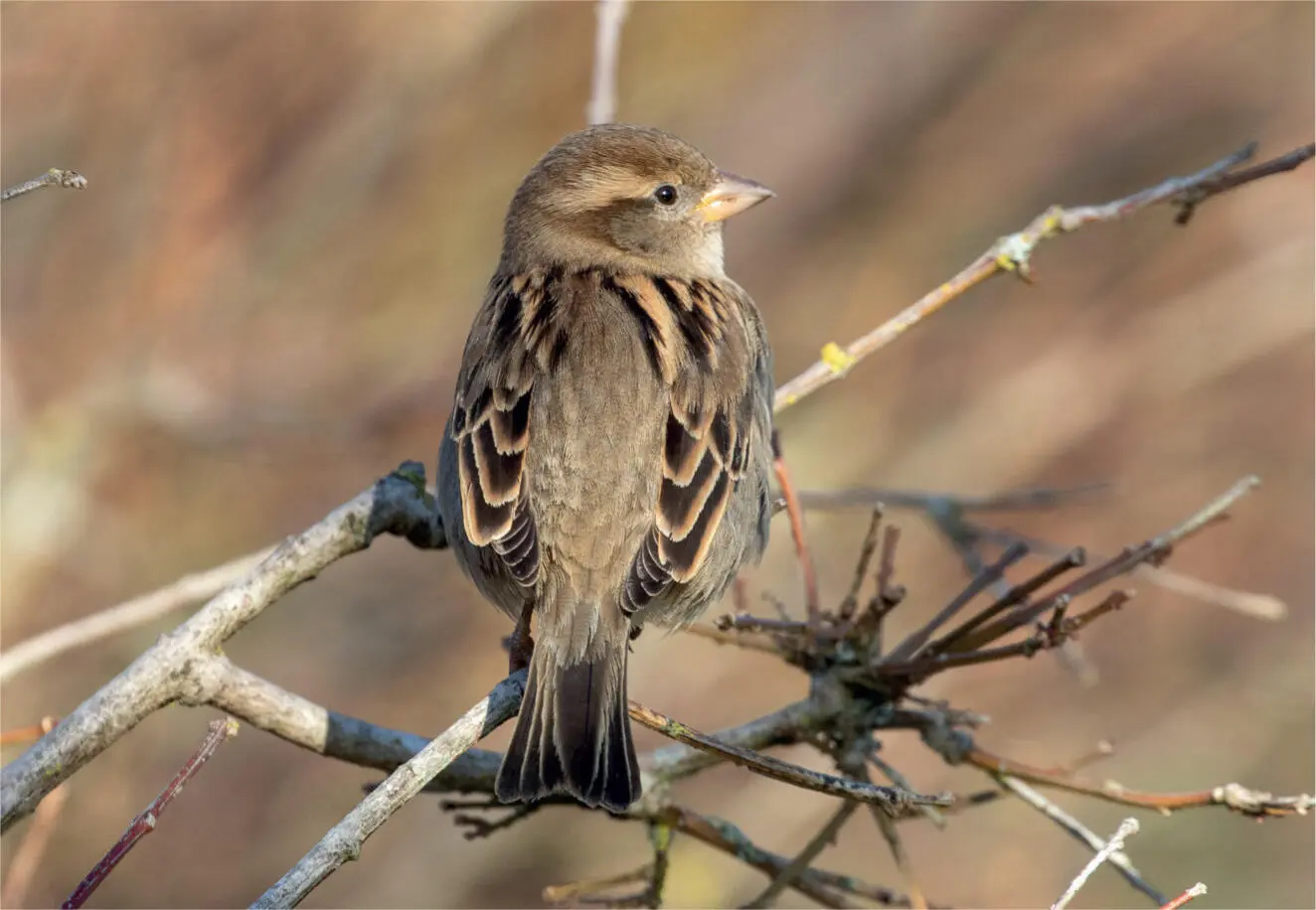
FIG 26. Large-billed species like House Sparrow are more likely to take larger seeds from a seed mix, the smallest seeds being difficult for them to handle. (John Harding)
The abilities of wild birds to select foodstuffs based on their nutritional characteristics is, as we have just seen in relation to fruits and berries, evident from observational studies; it is also evident from experimental work, though this is more limited. Work on Common Myna Acridotheres tristis has, for example, revealed that urban populations display a strong preference for food with a high protein content, favouring this over foods with high lipid and high carbohydrate contents in field-based trials (Machovsky-Capuska et al., 2016). This work suggested that these urban Common Mynas were protein limited, something reinforced by the way in which the birds competed for access to this food.
Two reportedly individually identifiable Blue Tits, visiting a bird feeder in a suburban Belfast garden during winter, were estimated to have obtained 25.36 per cent and 44.47 per cent of their daily energy requirements from peanuts (Fitzpatrick, 1995); comparable figures from the same study for two Great Tits were 16.41 per cent and 22.2 per cent. Although this study doesn’t adequately deal with questions over how the birds could be recognised as individuals from their plumage characteristics, the work has been used to suggest that these suburban individuals were obtaining a significant component of their daily energy requirement from the food supplied. Better-documented studies, this time on provisioned Black-capped Chickadees Poecile atricapillus in Alaska, found that individuals were obtaining up to 29 per cent of their daily energy requirements from the food supplied (Brittingham & Temple, 1992a; Karasov et al., 1992).
Selection for particular food items might also be shaped by how that food is presented. Garden bird species that would feed within trees and shrubs when foraging in the wider countryside – such as the tits – were some of the first to take advantage of seeds and peanuts presented in hanging feeders and mesh cages. The strong feet of these species enable them to grip hold of small perches or mesh, something that ground-feeding species like Robin, Dunnock and Blackbird would find too challenging. These latter species would be more likely to feed from a bird table or to take food from the ground. Changes in feeder design, most notably in the shape and size of feeder perches, can exert a big influence on which birds are then able to feed. The move from a straight perch to an ‘o’ shaped perch seems to have aided Robins to feed from hanging feeders. The advice to those feeding garden birds is to feed a range of foods in a number of different ways, providing opportunities for the different species and their favoured means and locations for taking food.
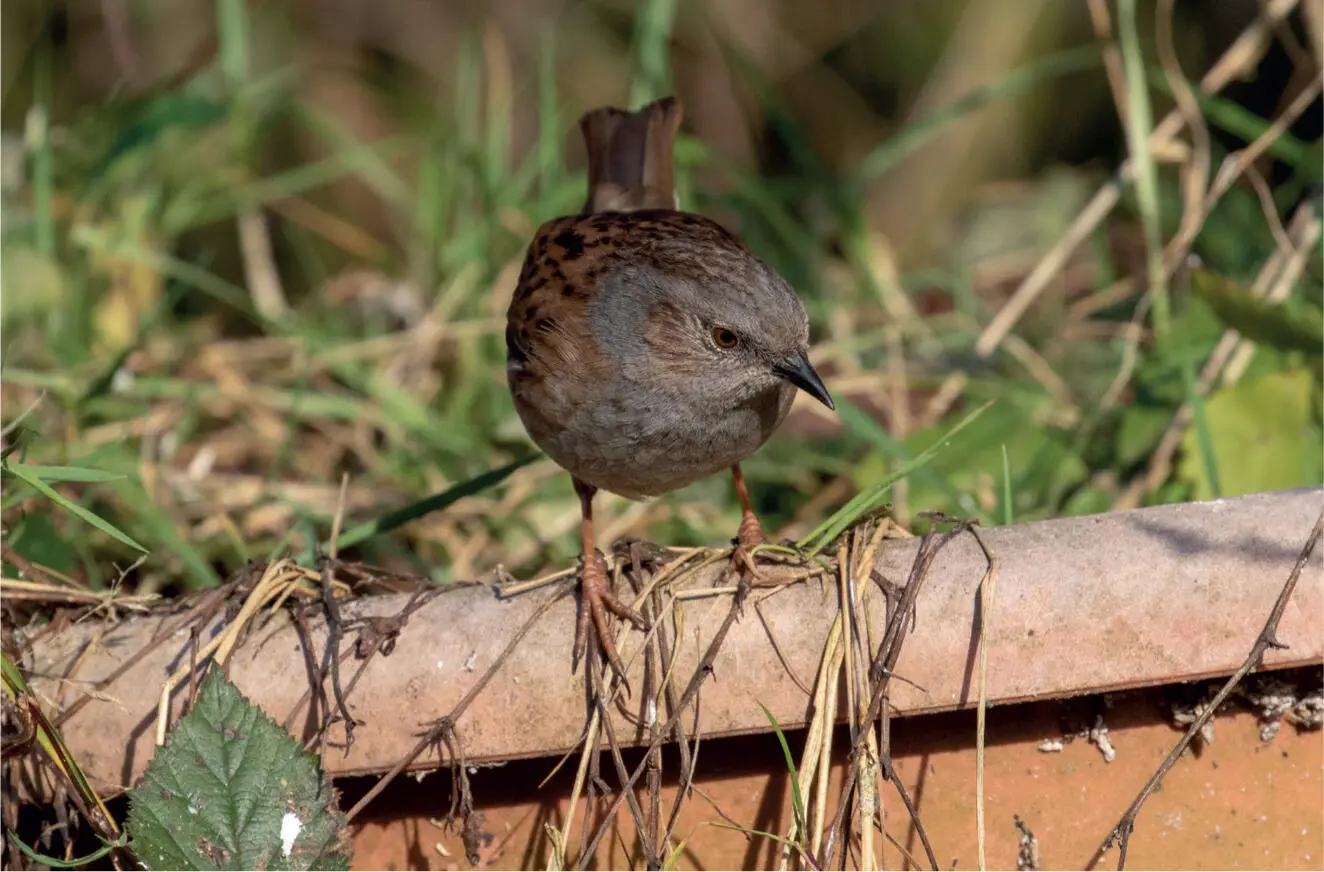
FIG 27. Like Robin and Wren, the Dunnock prefers to feed on the ground but it will venture onto bird tables and, occasionally, onto hanging feeders. (John Harding)
HOW AND WHEN BIRDS USE GARDEN FEEDERS
As we will see in the following section, the use of garden feeding stations is influenced by food availability over wider areas, from that available in the nearby countryside to that available many hundreds of miles away in other countries. Before we turn to look at the use of gardens in this wider context, we will start by looking at how the location of feeding opportunities within a garden can influence its use. The foraging behaviour of small birds is influenced by the conflicting demands of needing to feed but also to avoid predators; during the breeding season, the need to maintain a territory and attract a mate can, for many individuals, also be added to these demands (Lima & Dill, 1990). These considerations are likely to influence key decisions about where and when to feed, and we know, for example, that the pattern of arrivals and departures throughout the day at garden feeding stations is shaped by the balance of risk between starvation and predation.
Juvenile Blue Tits and Great Tits are known to be subordinate to older individuals and have been shown to make greater use of bird feeders located further from cover (and with a higher risk of Sparrowhawk Accipiter nisus predation) than adult birds. Hinsley et al. (1995) reported that 40 per cent of the tits they trapped at a feeder located close to cover were adults, with this figure dropping to 17 per cent at a feeder located further away. Another garden-based study found a similar pattern, this time looking at a number of garden bird species (Cowie & Simons, 1991). Cowie and Simons found that total food consumption declined with distance from cover in their experimental study using feeders positioned at different distances from vegetation. The House Sparrows in their study only used the feeder closest to cover, with Blue Tit only slightly more willing to feed further out into the garden. Only Greenfinch seemed comfortable feeding on the more exposed feeders; this species tended to arrive to feed in sizeable flocks and it seems likely that this flocking behaviour increased the chances that a potential predator would be spotted early enough for the birds to make their escape. Interestingly, the proportion of time that individual birds spent manipulating food items decreased in favour of increased vigilance when birds were feeding further from cover, again underlining the need to balance the energetic and nutritional returns against the risk of predation. Krebs (1980), looking at handling times in Great Tits, found that food-deprived individuals demonstrated shorter food-handling times than satiated individuals, presumably because they spent less time scanning for predators in order to take on board as much food as possible. A study by Suhonen (1993) has also demonstrated that foraging site selection in tits – this time mixed flocks of Crested Tit Lophophanes cristatus and Willow Tit Poecile montana – is influenced by a combination of the dominance relationships present and the perceived risk of predation by Pygmy Owls Glaucidium passerinum.
Читать дальше
